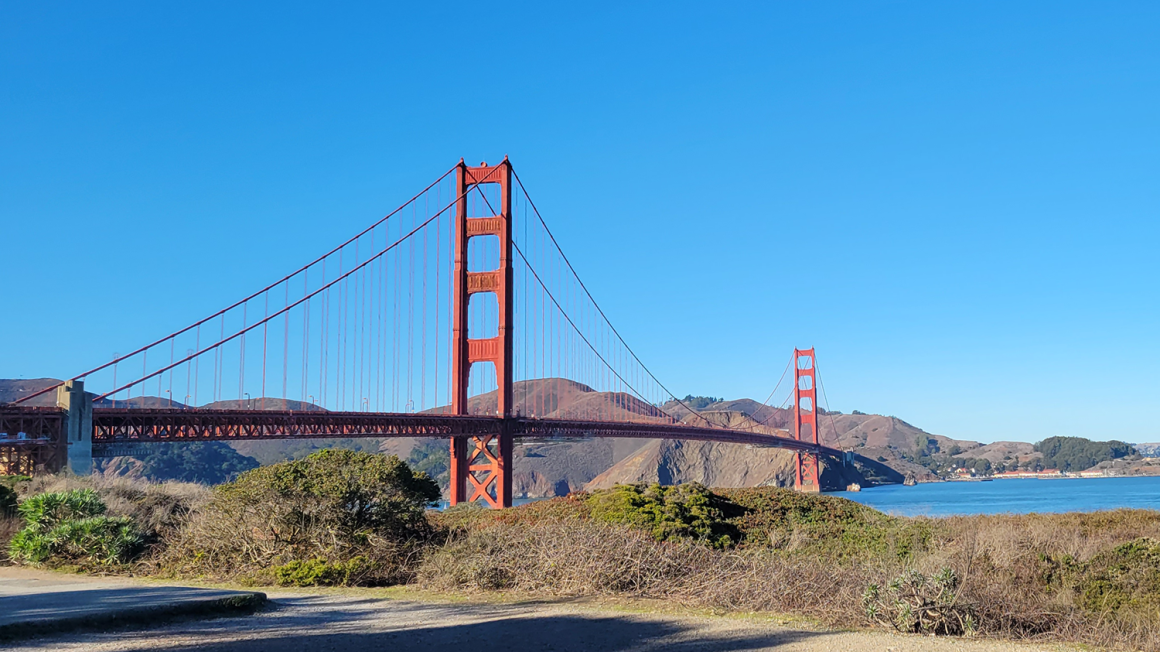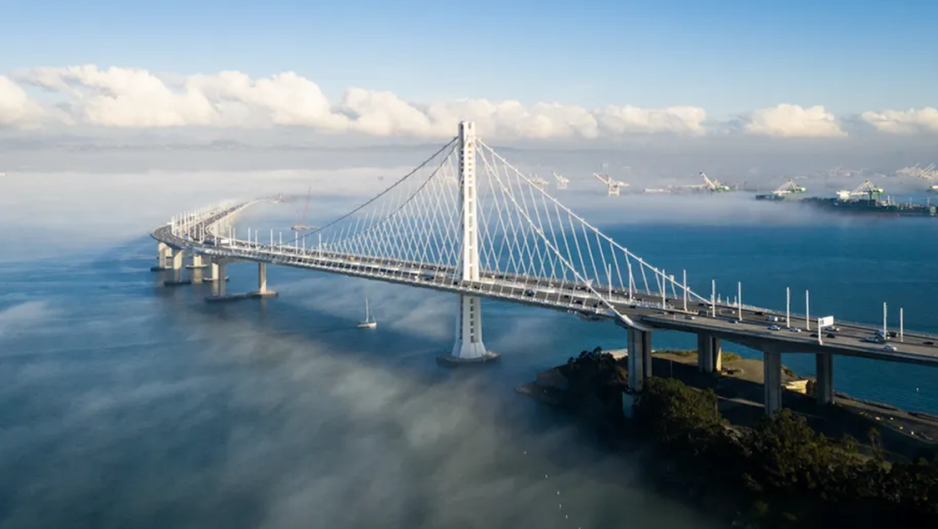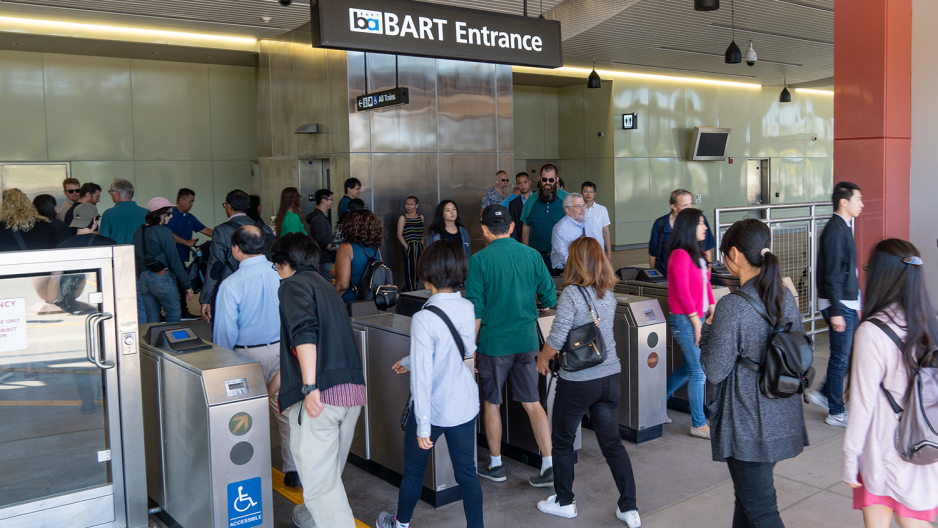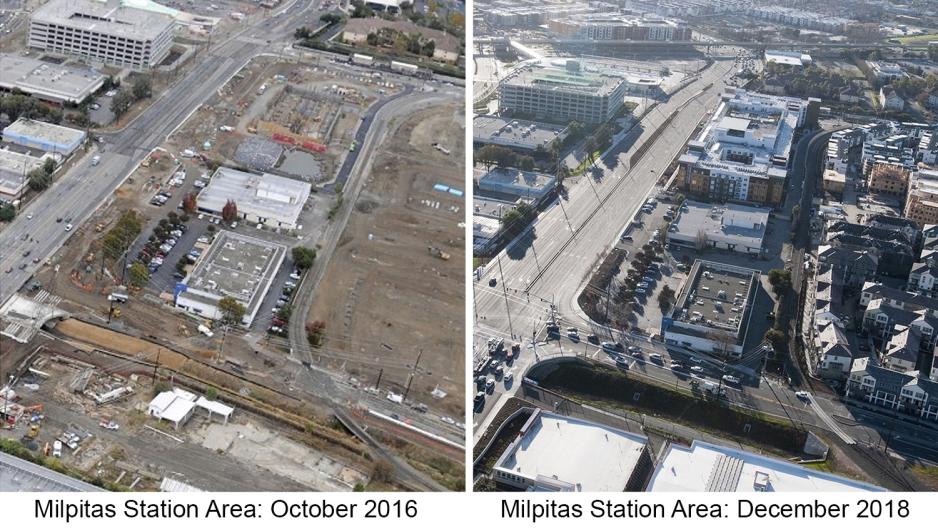What do the Golden Gate Bridge, BART, and even the interstate highway system all have in common? They are all mega capital infrastructure projects, that in today's world of interconnectivity, we could not function without them. While these projects take many years and resources to come to fruition, the long-term benefits cannot be overlooked. The positive impacts of transportation investments can be seen throughout the Bay. Improved transportation allows for more economic opportunity, thoughtful regional growth, and with investment in BART, more sustainable and equitable transportation options. Can you imagine the Bay Area without these notable transportation projects that have been built in the last century?
The Golden Gate Bridge is one of the most iconic bridges in the country, if not the world. At the time of its construction in 1937, this was one of the largest infrastructure projects the region had ever seen. In addition to becoming a major tourist attraction and symbol for the San Francisco Bay Area, the construction of the bridge enabled the growth of San Francisco, Marin, Sonoma, and Alameda counties into what we have today. It is hard to imagine what the Bay might have looked like without this connection. The bridge carries over 100,000 vehicles a day, 37 million a year, including over half a million freight trucks. Just recently, the State of California put an additional $400 million investment into the bridge to further protect it from earthquakes.
Another major investment was the reconstruction and rehabilitation of the San Francisco-Oakland Bay Bridge. The Bay Bridge was originally constructed in 1936 for $77 million (1936 dollars) and has over a quarter million vehicles crossing it daily. It suffered substantial damage during the 1989 Loma Prieta earthquake. Initial repair estimates for the Bay Bridge’s east span were $1.3 billion in 1997. By 2013, a total $6.4 billion investment was made into the bridge to reopen the east span of the bridge, highlighting the significance of this transportation infrastructure to the Bay Area’s economic vitality.
Photo: Bay Bridge East Span
The initial construction and expansion of BART is without question one of the most significant transportation investments in our region’s history. It’s enabled continued growth in Alameda, Contra Costa, San Francisco, San Mateo, and Santa Clara counties over the past fifty years. Starting in 1972 with a 28-mile, 12-station segment connecting Oakland to Fremont, investment in BART has continued with over a dozen different extensions and expansions between 1972 and 2020. Today, the system has grown to over 130 miles of track and 50 stations to serve the area’s 7+ million residents and nearly 22 million annual visitors. VTA’s BART Silicon Valley Program further extends BART service into the South Bay, closing the last remaining gap in frequent, high-capacity rail transit ringing the San Francisco Bay. The program is being delivered in two phases, the first of which opened in 2020. VTA’s BART Phase II will complete the Silicon Valley extension, delivering the vision for high-capacity transit in the South Bay and connecting BART with Caltrain commuter rail services serving the San Francisco Peninsula.
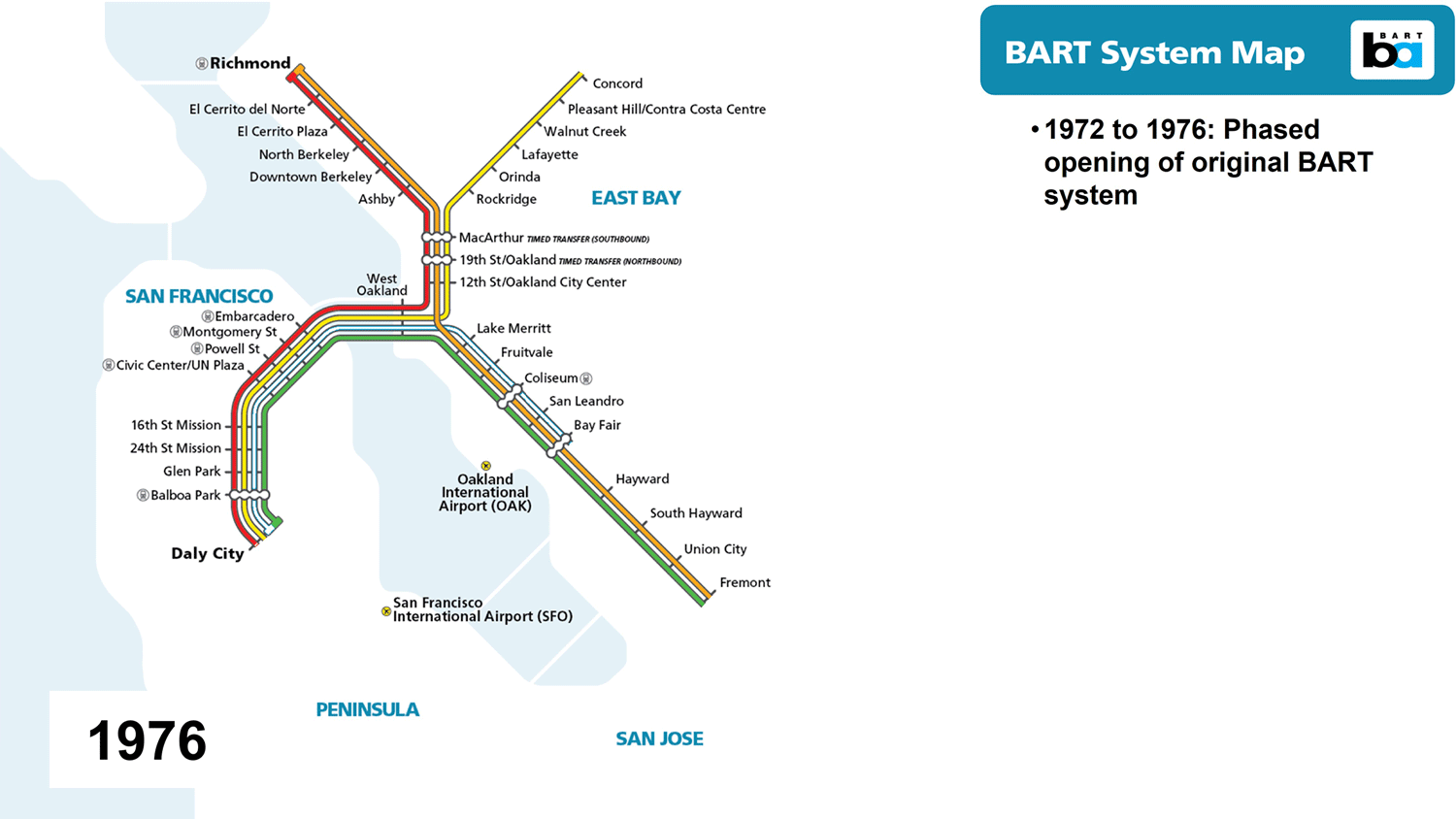
Photo: BART System Map over the years
Now more than ever, we need to ensure our investments continue to move us towards a more connected, accessible, and carbon-neutral future. VTA’s BART Silicon Valley Program does this by offering more sustainable transportation options that better connect Santa Clara County residents to jobs, opportunities, culture, resources, and education in rest of the Bay Area. VTA’s BART Phase II will bring direct and immediate benefits as well as serve as a catalyst for indirect, long-term benefits.
One of the primary benefits for riders is reduced travel time. BART service allows riders to skip rush-hour traffic and get to where they need to go faster and more reliably. It also means that the daily commute can be significantly less stressful, as riders can use that time doing what they would like to do, like reading, streaming content, or resting.
As a result of increased ridership, VTA’s BART Phase II will reduce overall traffic growth, limiting total traffic delay and stress on our roadway network (before the COVID pandemic, the South Bay’s highways were some of the most congested in the Bay). By enabling more people to take transit rather than drive their automobiles, VTA’s BART Phase II will reduce greenhouse gas emissions, a major factor in localized and global climate change.
Extending BART into the South Bay also improves equity. In fact, transit investment brings economic growth and spurs development. Increased land value surrounding transit stations and along transit corridors makes development more appealing, and state and local sustainability policies further incentivize investment in these areas. This means more jobs and more housing near transit stations. By increasing economic development around transit facilities, VTA’s investment in transit will facilitate the creation of Transit-Oriented Communities (TOCs). This new type of sustainable growth will further reduce greenhouse gas emissions by providing walkable environments for people to live, work, shop, and play without relying on automobiles. Developments around transit would help provide a healthier balance of work and housing, including the construction of affordable housing. New development around transit provides an opportunity to create more livable communities by providing complete streets, parks, and services.
Photo: Milpitas before and after BART to show development
Mega infrastructure projects take time. While at least 90 percent of these types of projects experience changes in costs and schedules as they advance, it is important to keep in mind that these megaprojects bring real benefits for decades, if not centuries, after their completion. Investments in transportation must take into consideration the long-term impact over the next 20+ years and cannot be judged based on current conditions. In fact, the American Public Transportation Association (APTA) has found that transit investments offer substantial financial returns, with an estimated average 6 to 10 return on every dollar spent when looking at a 20+ year horizon.
